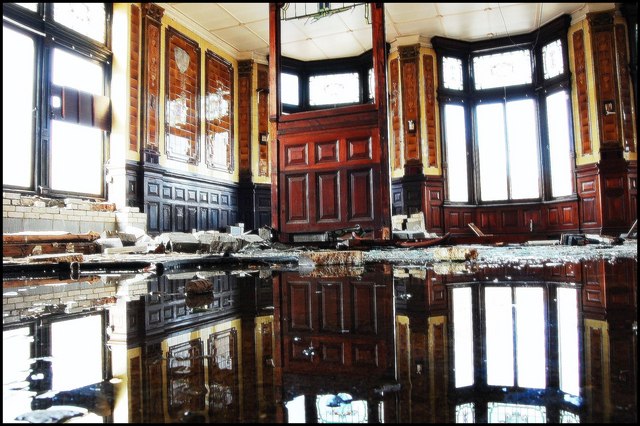Around our home states of Pennsylvania and New Jersey, water damage is nothing new to any of us. Especially considering the fact that we see hurricanes occasionally, generously mixed with a large share of severe thunderstorms and flash flooding. If you’ve spent a few years in Pennsylvania, you‘ve probably experienced a storm that knocked out power. Top all of that with an icy, snowy winter that leaves ice and thick snow everywhere in its path. That being said, over the years, we’ve gained a lot of experience deterring water damage from our properties. If you have already suffered water damage and are waiting on or battling a claim against your policy, please contact us immediately. However, for those of you who that hasn’t happened to as of yet, here are some tips to keep it that way.
Make Sure Your Drainage is Top Notch
When water builds up, that is when the bulk of water damage occurs. The obvious solution is to create ways to divert water instead of letting it build up. There are many ways to make sure your property is up to par, so that you won’t have to worry about water silently destroying your property and striking at the most inopportune times.
This one is extremely important: Make sure your sump pump is working! This is not something you want to find out needs repairs after the fact—by then, you’ll be looking at a considerable water damage remediation and removal bill. First off, it’s good to have a pro come and check your sump pump at least once every few years.
If you want to check whether or not it works, here’s how: Take a bucket of water, not a lot of water but enough to fill up the base of your sump pump, and dump it into the draining mechanism. As the water hits it, you should hear the pump’s engine turn on and start expelling the water from the system. If the water just kind of sits there and stares back at you, it’s not working and you should do something before the next severe rainfall. Sump pumps are designed to attract the water that gathers in the bottom of your foundation and basement. As that water builds up it will eventually overwhelm the broken sump pump and turn your basement into a pond.
Your gutters—make sure they’re clean. You could make this a DIY project—just grab a ladder, a small shovel and a brush and make sure they are clear of debris. Over time, leaves and other things ending up on your roof will find their way into the gutter. Clogged gutters just get worse as time goes on, especially if plants start to grow in it or if it starts to decay and compact. You can hire a pro for around $100-300, depending on the job. Clogged gutters can also lead to ice damming in the winter, so it’s important to keep them under control constantly. The gutters “downspouts,” the piping or otherwise that leads the water out of the gutters and away from your property, should have about 5-10 feet of clearance from your house so that the water can run down and away from your foundation.
Don’t Ignore a Leak. Ever.
Think of a leaking pipe as an hourglass where the top half never stops pouring into the bottom one. Eventually the water reaches a breaking point and serious damage starts to occur to your house. This can include rotting of the wood. Soggy, weakened wood attracts pests like carpenter ants and termites, which like to eat the soft, damp wood. Check for leaks regularly, and if you see one, please make sure to locate the source and figure out the best solution to the problem. Repairing a leak at first is cheap and easy; repairing a leak after an extended period of time can take significant remediation, including mold and mildew remediation.
We recommend that, at least once a year, you have your roof inspected. We recommend you get a pro to do this since getting up on your roof can have its own set of dangers. However, if you live in a single floor home or if you’re confident in your ability to do it yourself, go ahead. We don’t advise it, though. There are many ways to see indications of leaks indoors, including dark spots around pipes in cabinets, mildew stains on your ceilings, toilets that rock, the smell of mold or mildew and “bulging” that occurs above paint or sealer when water gathers in an area but cannot escape. Finally, there’s the dreaded and signature drippy sound that accompanies a leak. Be aware of your property’s piping and roofing structure and you can save yourself money in the long run.
These are just a few tips!
There are many other solutions to leak prevention and controlling water levels within your property. You can contact your local plumber or water damage remediation specialist for advice on what else to do. If you’ve arrived at a property with older infrastructure, a waterproofed basement could be in your future—to neglect to get one could cause you a whole boatload of water problems, no pun intended. If you’re already suffering from water damage woes and are having it out with your insurance company, please call us immediately at 1.800.410.5054




